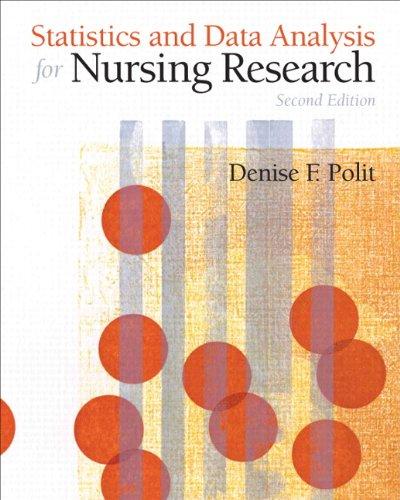B3. In this next exercise, perform analyses relating to outliers, again with the variable age1bir. Using the
Question:
B3. In this next exercise, perform analyses relating to outliers, again with the variable age1bir. Using the Explore procedure
(Analyze ➞ Descriptive Statistics ➞ Explore) put age1birth into the Dependent List when the dialog box appears, and put Identification number in the box that says “Label Cases by.”
Then, at the bottom left, click on “Both” for type of display, i.e., both Statistics and Plots. Click the Statistics pushbutton and click Descriptives, Outliers, and Percentiles, then Continue. Now, back in the original dialog box, click the Plots pushbutton. Under Boxplots, click on Factor levels together, unselect stem-and-leaf plot if it is checked, then hit Continue. Now run this procedure (click OK) and answer the following questions:
(a) In the table of Descriptive Statistics, what is the value of the trimmed mean? What percent of outliers does SPSS trim in calculating this statistic? Is the trimmed mean different from the untrimmed mean?
(b) Does this table indicate the value of the IQR—and, if so, is the value the same as your own calculations in Exercise B2?
(c) Does the skewness index in this table suggest a skew? If so, in which direction?
(d) What does the kurtosis index in this table suggest?
(e) Looking at the Percentile Table (ignoring information on Tukey’s Hinges), what age is at the 5th percentile? What age is at the 95th percentile? Explain the bearing of these values on the calculation of the trimmed mean.
(f) Looking at the table for Extreme Values, what is the highest value, and which case corresponds to that value?
What is the lowest value, and which case corresponds to that value? (g) Looking at the boxplot, are there any outliers? Are there outliers at the lower end (below Q1)? If so, how many—and are they “mild” or “extreme”? Are there outliers at the upper end (above Q3)? If so, how many—and are they
“mild” or “extreme”? (h) Are the outliers and extreme values at either end plausibly real values, or do you think they represent data entry errors?
Step by Step Answer:

Statistics And Data Analysis For Nursing Research
ISBN: 9780135085073
2nd Edition
Authors: Denise Polit






